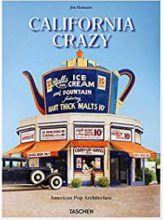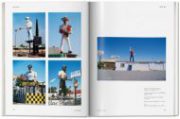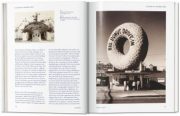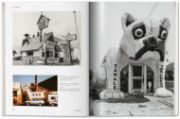Southern California has always had a special reputation when it comes to architecture and weird, very exceptional buildings or interior design.
 With the booming American automobile industry, the innovation of the highway system and long cruises by car instead of the endless train rides in the 1940s, came the thirst, hunger and need for supplies of all kinds the wayfarers had to be taken care of. Drive-Ins, snack bars, motels and other conveniences that catered to motorists popped up by the hundreds, particularly by the roadsides with easy access to the highway and interstate.
With the booming American automobile industry, the innovation of the highway system and long cruises by car instead of the endless train rides in the 1940s, came the thirst, hunger and need for supplies of all kinds the wayfarers had to be taken care of. Drive-Ins, snack bars, motels and other conveniences that catered to motorists popped up by the hundreds, particularly by the roadsides with easy access to the highway and interstate.
In order to draw the attention of the drivers to their own facilities, many operators of snack bars and grills came up with “California Crazy” ideas for their businesses. And instead of just setting up their shops like any other business, they often built their stores in the shape of their best-sellers. So many weird-looking buildings in the shape of donuts, hot dogs, burgers, coffee pots, pigs, frogs and any kind of outsized items suddenly appeared by the roadsides, always competing with the next shop, who would try to cap that idea by another “monstrosity,” as the buildings were usually labeled back then. 
Lacking sympathy for the style and the unique design led to the decay and extinction of many these architectural “gems” over the years, as the remaining buildings rightfully are called today. (A similar fate awaited the countless American Tiki bars with likewise exotic and strange designs in the 1970s).
 So preserved at least on film we have several hundred pictures featuring giant shoes, dinosaurs, legs, fast foods, fruits, that housed all kinds of shops, from restaurants to car dealers, drugstores and pet shops. These new attention-grabbers for some time – for some people – became noted landmarks of California and the L.A. area in particular.
So preserved at least on film we have several hundred pictures featuring giant shoes, dinosaurs, legs, fast foods, fruits, that housed all kinds of shops, from restaurants to car dealers, drugstores and pet shops. These new attention-grabbers for some time – for some people – became noted landmarks of California and the L.A. area in particular.
As it is common for the Taschen titles, there is not much text, as those are impressive visual books. Except for some introductory notes, an essay by David Gebhard and the many captions, there is not much to read.
Anyway, California Crazy is a (revised) fantastic architectural journey to a long-forgotten era of courageous and most unusual design.  Once more, Taschen could rely on the editorial skills and the vast collection of cultural anthropologist Jim Heimann, who has produced the All American Ads series and several other titles. And like those editions, the oversized California Crazy (with 4.1 pounds) comes in a multilingual edition with texts in English, French, and German.
Once more, Taschen could rely on the editorial skills and the vast collection of cultural anthropologist Jim Heimann, who has produced the All American Ads series and several other titles. And like those editions, the oversized California Crazy (with 4.1 pounds) comes in a multilingual edition with texts in English, French, and German.
Review by Dr. A. Ebert © 2018
Jim Heimann (ed.) California Crazy. American Pop Architecture. Taschen, 2018, 324 p., ISBN 978-3-8365-5148-9
